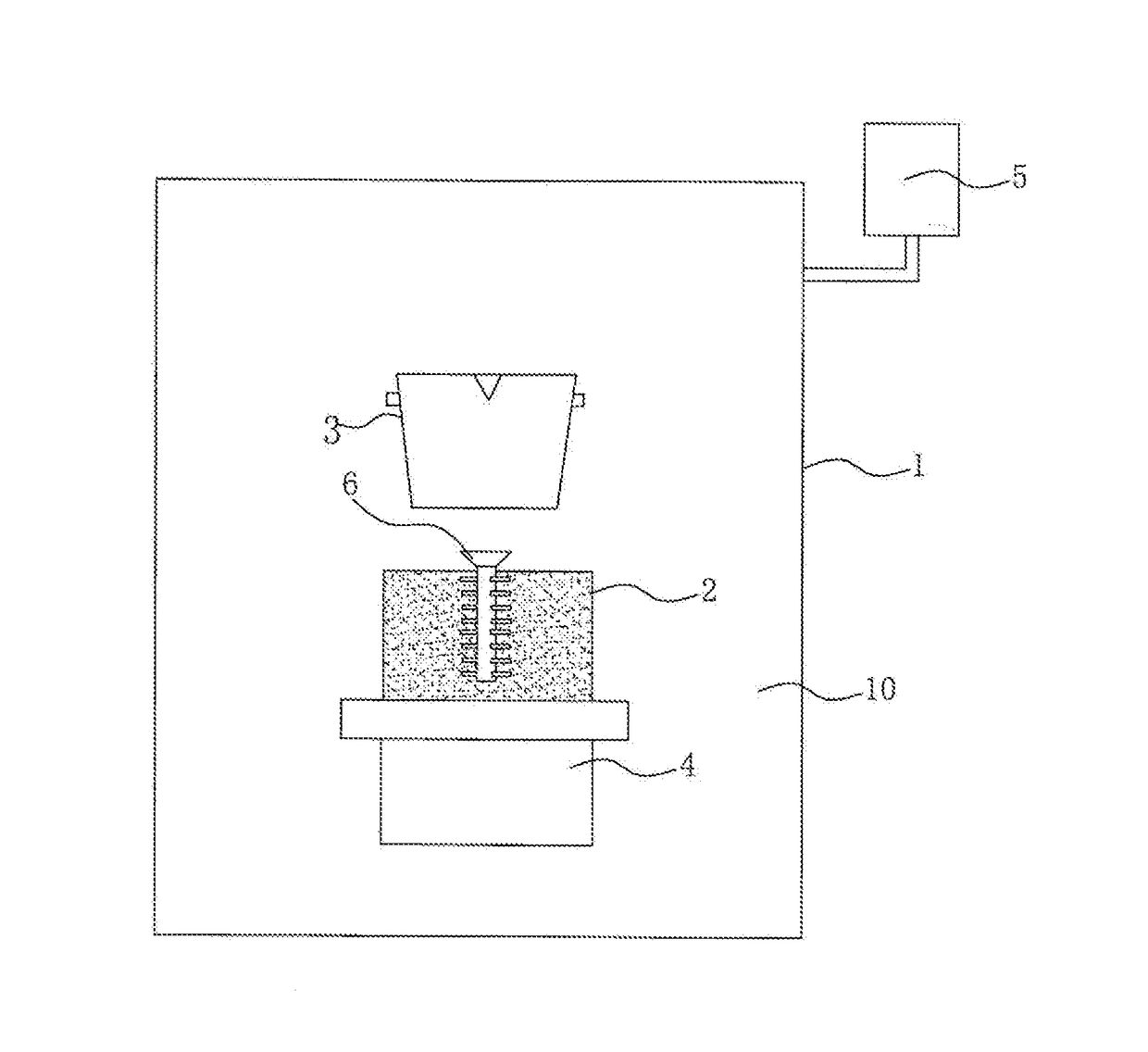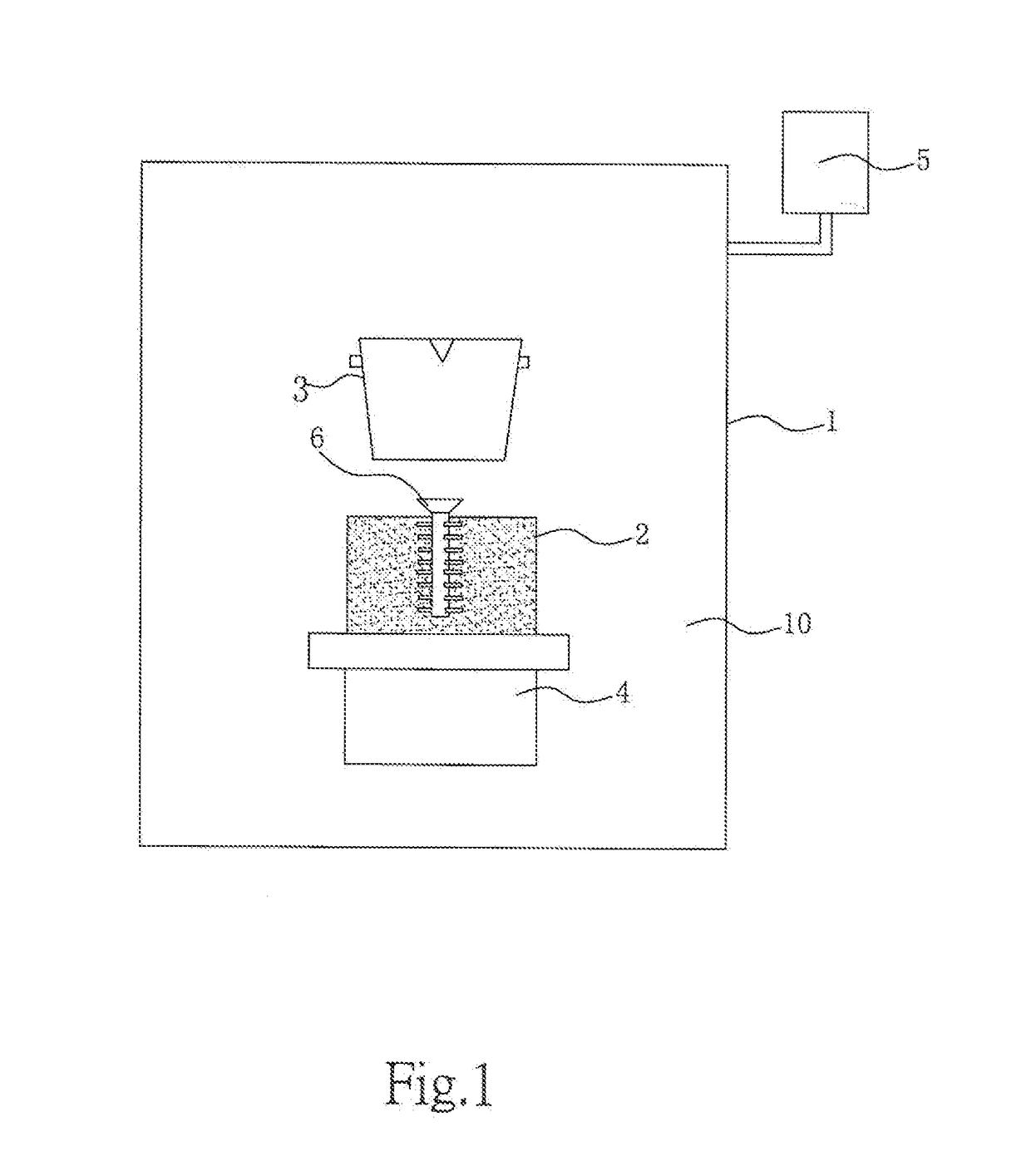Casting method of using 3D printing to make shell mold and vacuum casting device for use in the casting method
- Summary
- Abstract
- Description
- Claims
- Application Information
AI Technical Summary
Benefits of technology
Problems solved by technology
Method used
Image
Examples
Embodiment Construction
[0023]Below are further descriptions of the present invention with reference to the detailed embodiments and accompanying drawings.
[0024]The method of the present invention comprises the following steps:
[0025]1. Conduct computer-aided graphic design based on the product to be manufactured, normally using a graphics software program that can output to a 3D printer.
[0026]2. Input the graphic design into the 3D printer to print a 3D shell mold. The 3D printing mentioned in the present invention differs from traditional 3D printing in that it does not use hot melting material for direct printing and curing. The printing material adopted by the present invention uses a liquid mixture of photosensitive resin and ceramic powder. The printing method is the same as the current method, i.e., partitioning into “slices” and printing layer after layer. The thickness of each printed layer is 25-100 um. Upon completion of printing, each layer shall undergo UV radiation, so that the photosensitive ...
PUM
| Property | Measurement | Unit |
|---|---|---|
| Thickness | aaaaa | aaaaa |
| Pressure | aaaaa | aaaaa |
Abstract
Description
Claims
Application Information
 Login to View More
Login to View More - R&D
- Intellectual Property
- Life Sciences
- Materials
- Tech Scout
- Unparalleled Data Quality
- Higher Quality Content
- 60% Fewer Hallucinations
Browse by: Latest US Patents, China's latest patents, Technical Efficacy Thesaurus, Application Domain, Technology Topic, Popular Technical Reports.
© 2025 PatSnap. All rights reserved.Legal|Privacy policy|Modern Slavery Act Transparency Statement|Sitemap|About US| Contact US: help@patsnap.com


